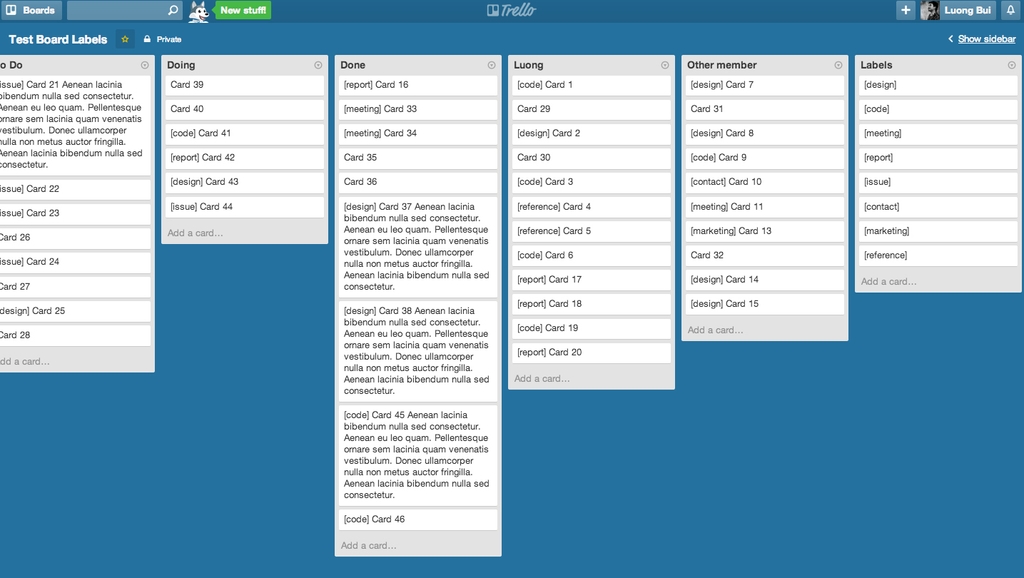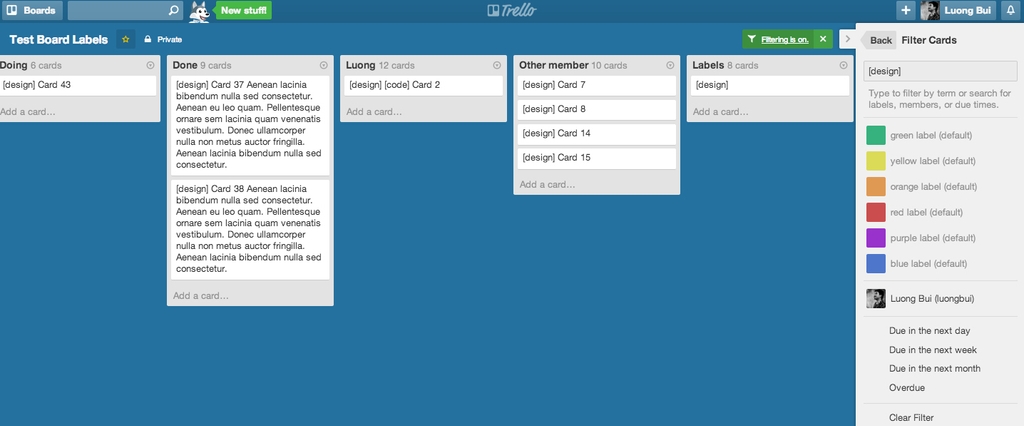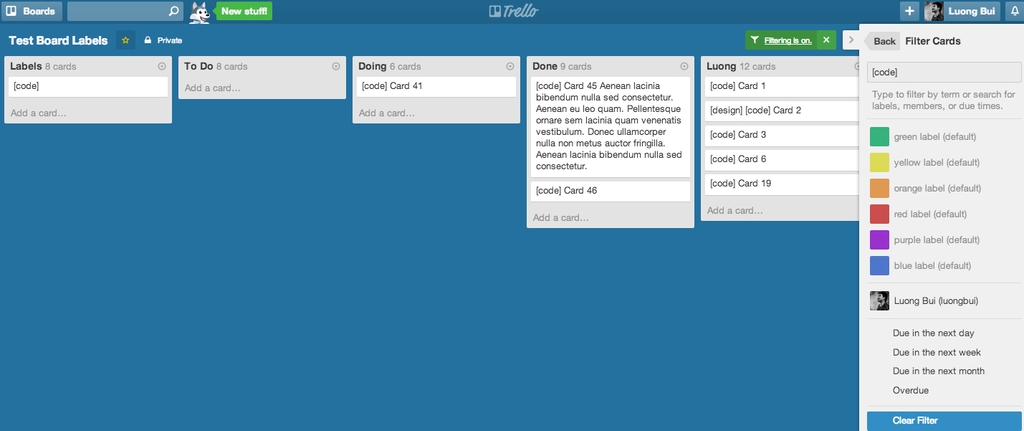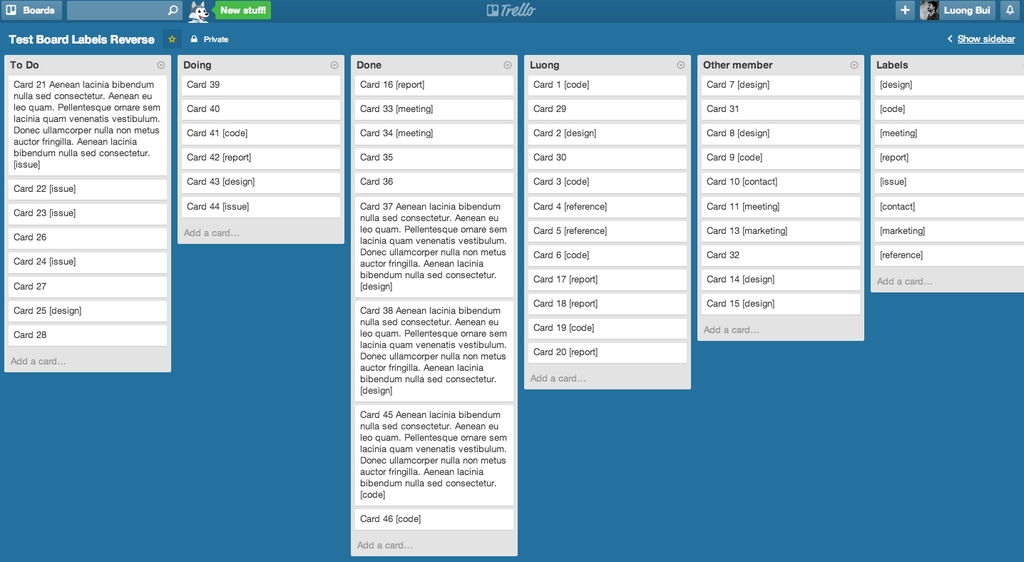In the last years, for all my projects, personal and non-personal ones, I relied on Trello, the famous dashboard tool based on cards and boards.
What I really like about Trello is how it lets you see the state of a project, from various (all) its point of views, from all its contexts, in a glimpse, in a visual way. It is beautifully designed to let you do so.
One of the habits I started to adopt is the use of text labels in my cards.
I don’t use them as a substitute of the labelling system of Trello but I find them useful as a starting point to order the cards across the lists.
As you can see a text label is simply a special formatted string; I use a string surrounded by square brackets.
Of all the lists there is a special one, always placed at the right-most position of the board. This list contains all the adopted text labels, one for card. I keep only one list of this type per board.
The purpose of this setup is to be able to quickly filter the cards, using the Trello filter.
Just open the sidebar, then, under the Menu, click on “Filter Cards”. In the textfield just copy the text label that you want to see.
I usually place the list with all the labels at the right-most of the board, so it is visually near the textfield of the filter.
Of course it also works wherever you place that list but I think that it becomes less practical, as your eyes has more space to cover between the list and the textfield.
Normally I place the text labels at the beginning of each cards. This could worsen the readability of the list as a whole, so sometimes I put the text labels at the end of the cards.
As said, I don’t think text labels are good substitute of the Trello labels as the latter are coloured and Trello is built heavily on visual. But I still use them frome time to time.
(I also use Todoist – ex Wunderlist user here – for tasks with very focused contexts – like a particular portion of code -, I am still deeply in love with Evernote and I want to start to try Slack as soon as possible, as it seems that it really helps to reduce all the emails in a project.)
P.s.: of course this method still works with a more fancy hashtag-like label; #code, #design, etc.. But I found out that I am too used to hashtags, so I tend to overuse them. After a while, keep track of all the labels manually is hard (to add them to the special list), especially if they tend to pop up everywhere.




